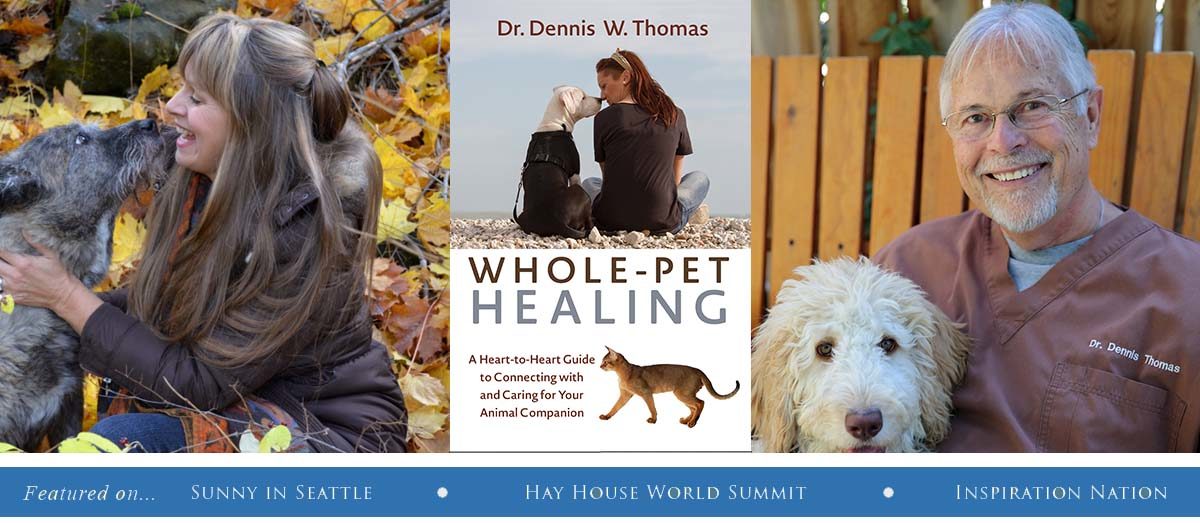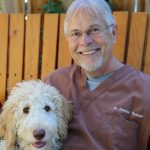As most of you know, there is an enormous movement in health care, both human and pet, towards a more natural method of staying healthy. This is a great thing, if for no other reason than it gets us out of the conditioned mind approach to medicine. We have been so conditioned for so long with one perspective towards health care, that we forgot to keep asking questions.
When I wrote my book, Whole Pet Healing, a few years ago, I told the fictional story of a young man who loved automobiles. He lived in a small town with one auto mechanic. Wanting to learn the trade, the young man approached the old mechanic and asked to be his apprentice. The older mechanic was delighted to see the young man’s enthusiasm and agreed to teach him the trade.
The older mechanic took the young fellow to the back of his shop and proudly opened his enormous tool box. Inside his tool box was every kind of screwdriver that had ever been made. The tools were neatly polished and aligned in order of their function. The young man looked at them in awe.
“This is all you will ever need to work on cars,” the old man told the youngster. The young man spent the next few years learning from the experienced mechanic. He watched the old man fix the broken cars, using the exact screwdriver that was required for each situation.
On occasion a tool salesman would come into the garage and show the old man his new tools. If it was a new screwdriver, the old man would look and listen. If it wasn’t a screw driver, the old man humphed at the tool, and turned away. Not only had the older mechanic become a specialist with his screwdrivers, but he had been doing it so long that he saw every broken car from only that perspective. As one could imagine, there were a number of cars the old man could not fix. He would tell the customer, “Sorry, but it can’t be fixed. Time for a new one.”
Several years passed and one day the tool salesman came into the shop while the young mechanic was alone. The tool salesman talked him into looking at a new tool, one that the older fellow had refused to see. It was called a wrench. The young mechanic was amazed at what the new tool could do and he purchased one. In a short time, the young man was able to do things that the older mechanic could not. The old mechanic became bitter and sent the young man away. The young mechanic opened his own shop, became very successful and lived happily ever after.
Conventional medicine is a lot like the old mechanic with his screwdrivers. It does a wonderful job at what it is capable of doing. But, like the screwdriver, it has its limitations. Many practitioners, both animal and human, have become frustrated with the limitations that they are seeing with their patients. Some, have chosen to look for more options.
Some conventional practitioners, like myself, decided to look at alternative modalities in hopes of expanding their ability to help their patients. They often turn to Chinese medicine and acupuncture or homeopathy. Some others are turning to naturopathy, massage, chiropractic and others. Some even call themselves holistic practitioners.
Like the young auto mechanic, when he decided to use wrenches and screwdrivers, he expanded his abilities to work on the cars. Vets that choose to add acupuncture or homeopathy, often do the same thing. Like a new tool, they can often use their new modality when the other, conventional approach does not work. This is what we call integrative medicine. It is not holistic medicine.
Let’s say that I have a certificate to practice acupuncture on pets. I have a dog come into my clinic with severe hip arthritis. He has been on my prescribed conventional medications for some time and he is progressively getting worse. I have no other options for medications, so I turn to acupuncture for help. I select acupuncture points that will help with the hip pain and the dog improves for a while. Everyone is happy because I was able to help the dog for a while longer, beyond what the drugs were doing. This is an integrative approach for this dog. This is not a holistic perspective. Maybe, a step in that direction at most.
A holistic approach to medicine accepts the role of integrative therapy, but realizes that it is only a small role in health care. Holism basically means that the whole is more than the sum of the parts. Conventional medicine, with its desire to explain how the physical body works, has used a reductionist approach. It has continually broken down the physical body into separate parts and those parts into separate categories, etc. This narrowing focus on the physical body is the opposite of a holistic approach.
Holistic medicine recognizes the body as an energetic field, called a biofield. This fact has been proven by scientists and with research done in the field of cell biology, we now know the important role that energy has on the physical body. When we expand our awareness of energy, we realize that everything is energy and everything is connected. This cannot be ignored when it comes to health care for our pets. A great example is how our energy field has a direct effect on the energy field of our pet. If we are not healthy, emotionally or physically, our energetic influence will, in time, have a deleterious effect on our pet.
Imagine that you are walking through a brilliant wildflower field. When you first look at it, you are awe-inspired. You notice the colors of the flowers, the movement in the wind, the soft, sun-spangled light. Now, imagine that you come upon that field and you immediately put a soda straw up to your eye. You might see one or two flowers and you move forward to take a closer look. You put the straw up to one flower and then to each petal hoping to understand how the wildflower field functions. It ignores the other flowers, the wind, the sun; the aliveness.
Holism is the awareness of unification; an essence of life’s expression moving through all of the parts to create a wholeness. When you look at your pet, you don’t focus on a tail, an ear, a paw. You look at it as a whole being and from that perspective you become aware of a connection between yourself and your pet. In time, you become aware of the interconnection between you, your pet and all individuals. Then, you will know the wildflower field as part of yourself.

